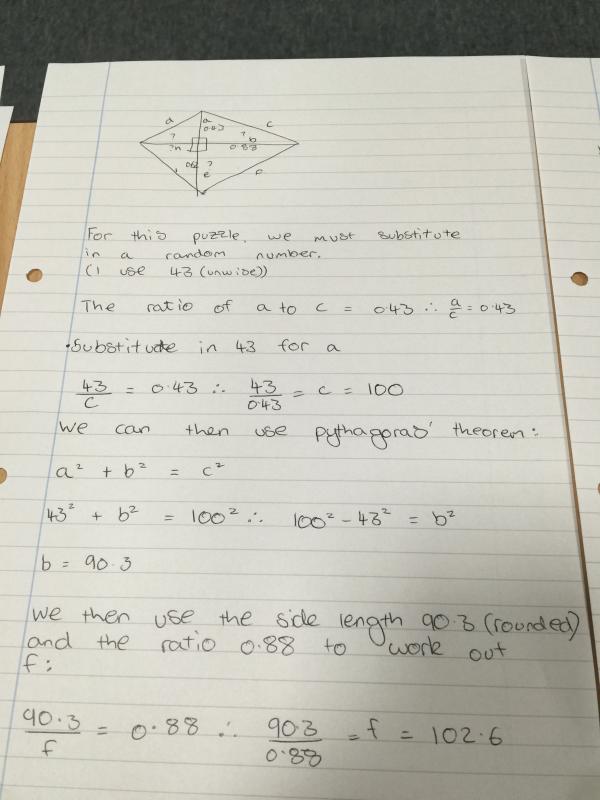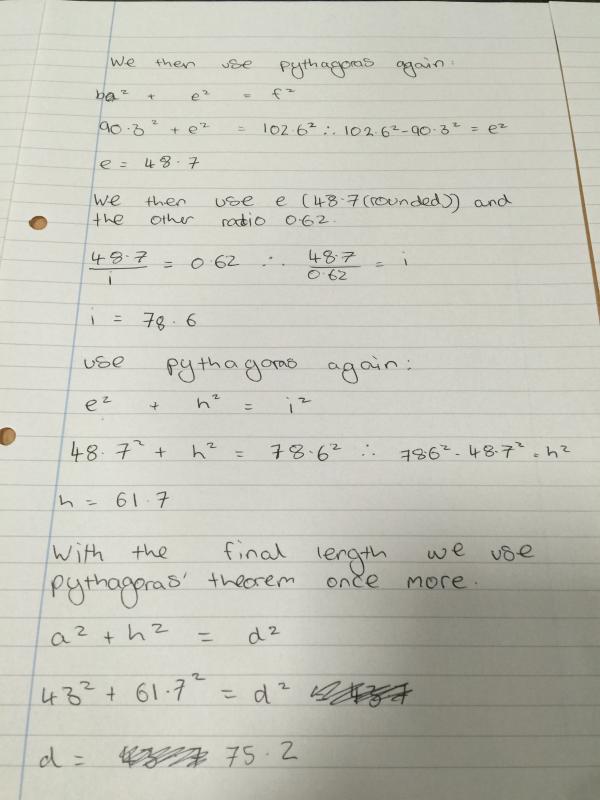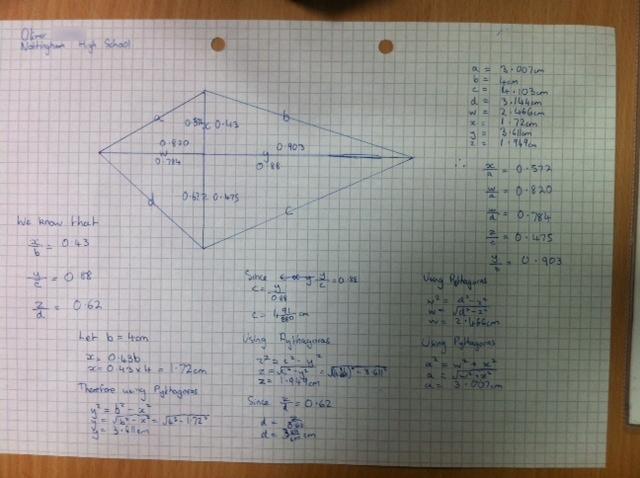Eight ratios
Two perpendicular lines lie across each other and the end points
are joined to form a quadrilateral. Eight ratios are defined, three
are given but five need to be found.
Problem
Image
Two perpendicular lines lie across each other and the end points are joined to form a quadrilateral.
Eight ratios are defined, three are given but five need to be found.
Each original line is now in two parts and there are a further four lengths forming the quadrilateral.
The ratios work like this, 0.43 is the ratio between the upper portion of the vertical line and the hypotenuse of that orange triangle. Similarly 0.88 is the ratio between the right-hand portion of the horizontal line and the hypotenuse of that green triangle.
Can you find the five ratios which were not given?
This problem is about ratio, you could have a big version or a small version of the diagram and it would make no difference, so why not make the size something convenient ? Why not try having the hypotenuse of the top right orange triangle as your unit - ie. make that length 1 . What will you do next ?
Getting Started
Because the data for this problem only mentions ratio, not length, you can imagine the diagram being scaled up or down without any of the ratio values changing. So choose one length somewhere as something convenient and then try to calculate other lengths from that.
Student Solutions
Oliver, from Nottingham High School, and Jonathan, both sent in very good solutions to this problem.
Here is Jonathan's solution:
Image

Image

Image

Oliver's solution is below:
Image

Well done to both Jonathan and Oliver for their excellent solutions!
Teachers' Resources
This problem was originally created within a theme of trigonometry. Trigonometry can sometimes become routinised and leave students without a good feel for trig values as ratios. This problem is deliberately couched in ratio terms rather than Sine or Cosine expressions. Connecting up again with Sine and Cosine could be very valuable, especially if the extension at the end of these notes has been explored.
Increasing the scope of this enquiry, it may be useful to ask students whether the problem can be solved when any three of the eight ratios are given, or must it be this particular three ?
As a very enriching extension, the eight ratios can be grouped to produce a surprising result :
Make a group of four ratio values starting with 0.43, 0.88, and 0.62, then continue clock-wise to include the unknown ratio value which compares the left portion of the horizontal line with the hypotenuse of the green triangle. Form the product of these four ratios and compare that value with the product of the other four ratios.
